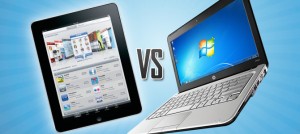 Tablets are not going to eclipse the person computer quite as fast as many once thought, says IDC, the International Data Corp, a market tracker.
Tablets are not going to eclipse the person computer quite as fast as many once thought, says IDC, the International Data Corp, a market tracker.
Late last week, IDC cut its shipment forecast for tablets and the two in one flat board that combines laptop and tablets features to 233 million. The tracking company said growth would be just 50% of what had been predicted originally.
While the shipments in the mature markets of Western Europe and North American have been forecasted to be flat, those in the emerging regions had been expected to climb by 12% overall.
The forecast from IDC for worldwide shipments of PCs is now a drop this year of 3.7% rather than the 6% it had originally predicted at an earlier date.
An increase in the shipments of laptop and desktop computers in the mature markets would more than be offset from the reduction in the emerging markets like Latin America, the Middle East and Asia, said IDC.
On research analyst said that programs to lower prices of PCs, such as the Windows 8.1, have helped to improve the shipments of PCs in some of the segments.
However, the prospect for significant growth in PC sales over the long term is still tenuous since users are more and more seeing PCs as just one of a number of computing devices, said the analyst.
People today are waiting a bit longer to have their PCs replaced and are tempted more by the alternate computing programs, said the market tracker IDC.
A separate report by IDC this week gave an estimate that over 1.25 billion smartphones are to be shipped this year worldwide, which represents an increase of more than 24% from last year’s total shipments of 1.01 million.
The total number of shipments of smartphones over the next four years is expected to climb to over 1.8 billion annually.
